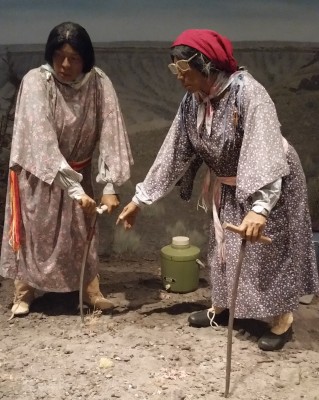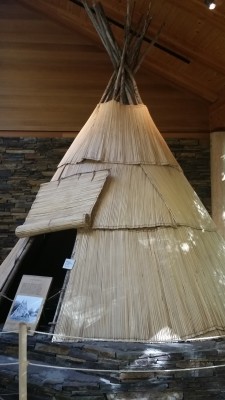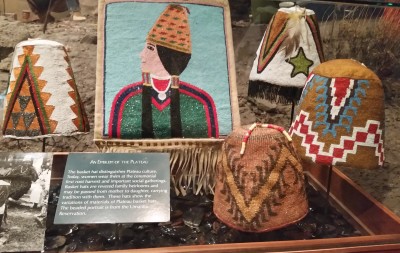Touring The High Desert Museum
As part of our 2015 Women Writing the West Conference in Redmond, Oregon, conference co-chairs Jane Kirkpatrick and Shanna Hatfield offered members the opportunity to tour the High Desert Museum, which is located near Bend. The museum opened in 1982. It was founded by Donald M. Kerr, a native of Portland, and brings regional wildlife, culture, art and natural resources together for tourists to understand the cultural heritage of high desert country. The museum has both indoor and outdoor exhibits that demonstrate and teach.
Upon arrival, we were able to get a sneak preview of an art exhibit entitled: Tough by Nature: Portraits of Cowgirls and Ranch Women of the American West. These portraits honor the spirit of ranch women and cowgirls through sketches, paintings, and interviews of 49 women by artist Lynda Lanker. She’d spent 19 years traveling across the west getting to know these women and then capturing their spirit through mediums including charcoal, oil pastel, acrylic and egg tempura, plate and stone lithography and drypoint engraving. Lanker lives in Eugene, Oregon.
As I horse owner emotions swirled through me, from awed to inspired to gratitude-filled to honored. How I can relate to their love of ranch life and horse competitions. And how I had to pull myself away to visit the Native American exhibit. Her website http://lyndalanker.com/ beautifully displays her breathtaking work.
The final portrait I viewed before walking out those doors and down the hall to the American Indian exhibit, was of a Native American woman in full regalia sitting on her mount, who was also in full regalia, and it stuck in my memory, as it still does today. The work, as a beader myself, I know took hours, days, months, years to complete. Her expression was one of peace, pride, and honor for her people and who she was as a Native woman.
What a perfect segue into the next piece of my self-guided tour. Living on the Colville Indian Reservation for almost three decades now, I tend to feel at home and at peace walking through American Indian land and museums. It was no different that day. The first thing I saw was the Tule-mat tipi in which my eyes lit up and my heart danced. Many people are not aware that many tribes did not use animal hides for homes. Most of the bands that make up the 12 tribes of the Colvilles did not. The original homes were six-foot tule-mat pit dwellings.
On the wall leading into the entrance was a map that displayed the Plateau Tribes of of the Columbia River, in which the Colvilles are a part of. Eleven of the twelve bands were on the map.
As I stepped from presentation to the next, one display caught my eye. It proudly showed traditional basket hats encased in glass. Colville Tribal women were master basket weavers, and there are some that continue on with the art. Their baskets are tightly woven, water proof and made of original materials such as birch bark and bear grass. These baskets were also shaped into hats, some of them with natural materials and some more modern that were beaded. Recently I attended a pow-wow in our community and a woman allowed me to photograph her handmade hats. The work was spectacular. And now, as I stood before the glass case, a circle felt complete.

I walked on and found life-sized root diggers. I actually laughed out loud because I had been recently helping an author friend journey through one of the four towns that boast the Colville Reservation. A couple miles south of the tribal agency in Nespelem, a local artist crafted five metal traditional root digging women. The women in the display had the same type of metal root digger that our Native Studies program uses in our high-school and they had the same stance. Did I mention I felt like I was home?
There was display after display of beaded regalia, woven baskets, insides of tipis past and present, tools and more. This exhibit takes visitors on a journey showcasing the Plateau Native Nations comprised of the Nez Perce, Umatilla, Warm Springs, Yakima, Spokane and Colville tribes from the time of reservation placement to the 21st century. From historical to contemporary.
But isn’t that what we writers do? Take our readers into new places and times whether it is in the past, present or future? I hope if you are ever in the Bend, OR area you make this trek into time at the High Desert Museum.
There was much more at the museum, but time prohibited my exploration, which even prevented venturing into the gift shop. Another time indeed.






I hated missing the High Desert Museum tour, but thanks to you, I was able to ‘see’ the Native exhibits. So interesting.
Doris, I’m sorry you missed it. I have a few more pics if you want me to email them to you. I’d be happy to share. It was magnificent!
Thank you, Carmen, for this excellent review of the high Desert Museum. I loved that tour, too, and you’ve done a fine job describing it.
Thank you, Mary! I appreciate that. I really want to go back and just take my time and go through every exhibit. I didn’t make it outside, as I was just to busy being at home. 😉